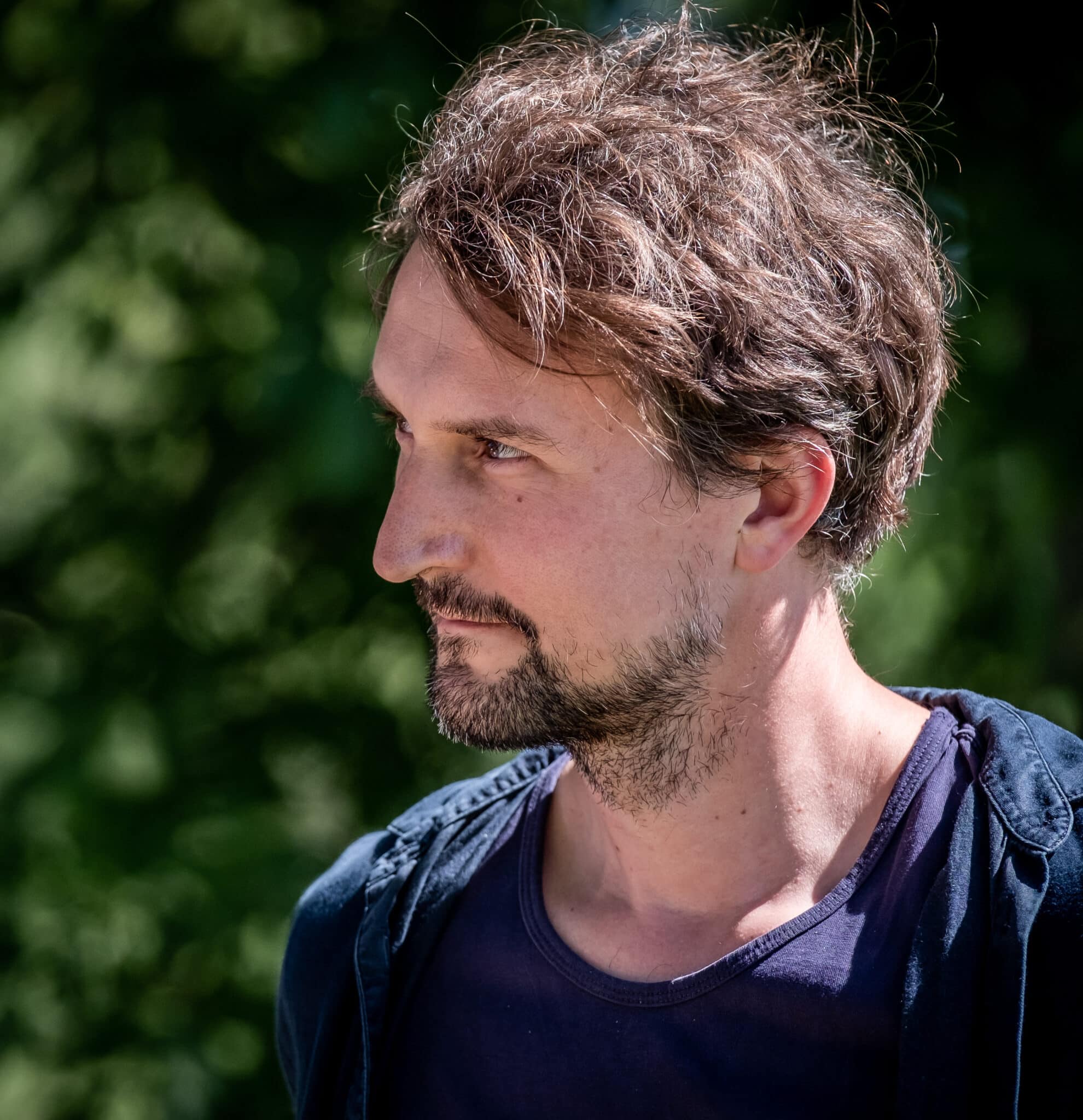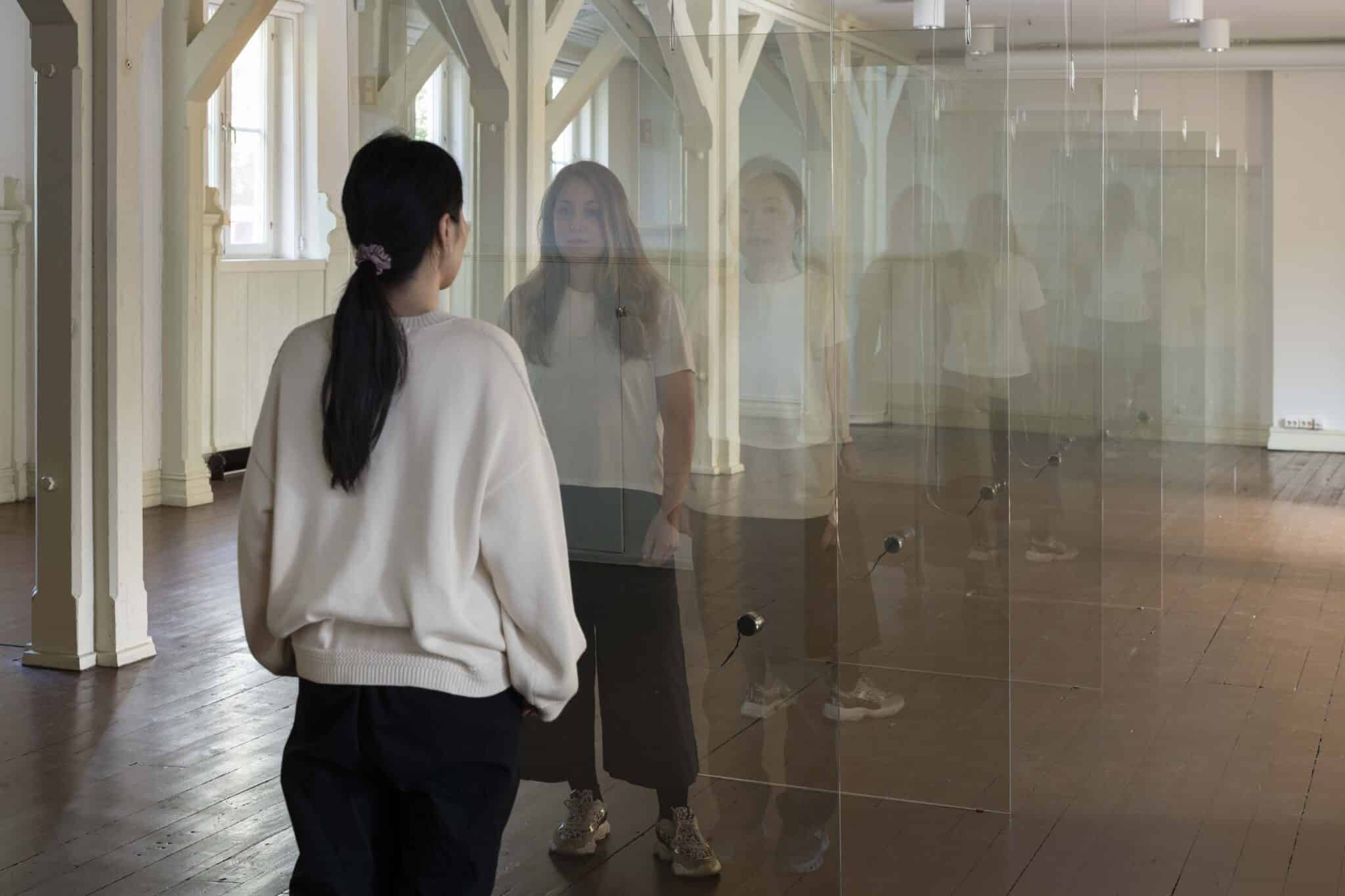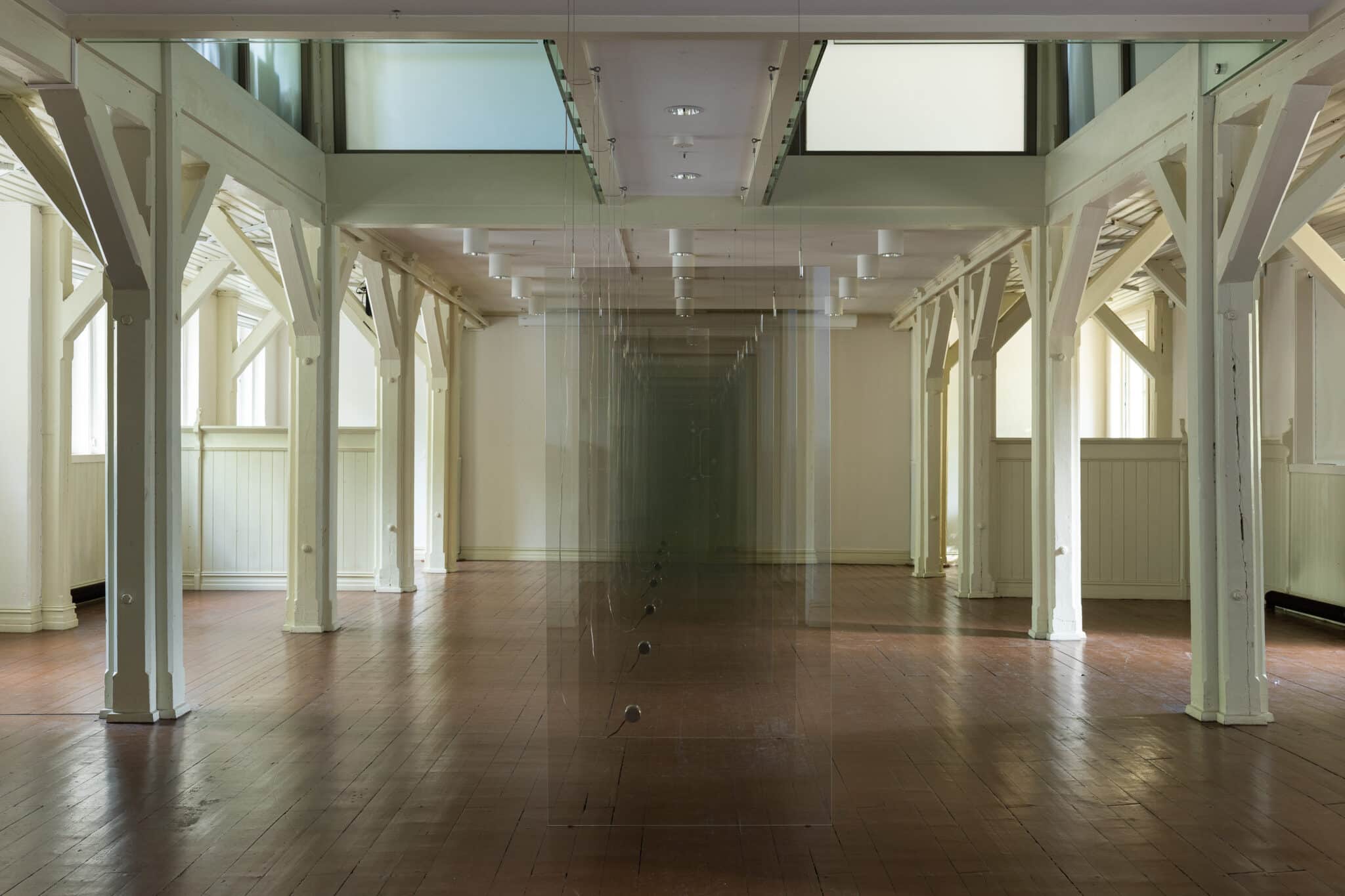Publisert 29.09.2025
 Hans Rosenström. Photo: Kim Matthai Leland
Hans Rosenström. Photo: Kim Matthai LelandBased in Stockholm, Hans Rosenström is a Finnish-Swedish artist who has worked with sound and space since 2018. His exhibition Broken Chord is currently on display in Oslo.
We spoke with him about his artistic process and inspirations, his perspective on the voice as a form of artistic material, and how he works with installations where sound and space interact.
Your work, Broken Chord, is currently on display at Atelier Nord in Oslo. How would you describe it in your own words?
Broken Chord is an installation consisting of suspended façade glass panels and seven voices. The voices are played through vibration speakers attached to the glass, turning the glass into the membrane that carries the sound into the space. As you move between the panels, you encounter shifting spatial reflections, mirrored images of other visitors, and voices that appear and dissipate. These temporary encounters reflect our presence and impermanence in each other’s lives.
“Broken Chord is an installation consisting of suspended façade glass panels and seven voices.”

Hans Rosentröm, Broken Chord (2025). Photo: Istvan Virag, KUNSTDOK / Atelier Nord

Hans Rosenström, Broken Chord (2025). Photo: Istvan Virag, KUNSTDOK / Atelier Nord
You often use a human voice as material in your work. What is it about the voice that interests you?
There are several characteristics about the voice that interest me. It’s not only intimate and private, but public at the same time. The voice is born inside the body, but is experienced in those listening to it, and it is a special medium that breaks down barriers. Even though a voice is disembodied, it carries traces of its origin, the person, and a lived life. Just as quickly as it appears, it disappears. Sometimes, voices leave small traces within us. There is something melancholic and quite beautiful about it. A voice also conveys language, which raises a number of complex questions, not least about power, manipulation, and abuse.
“The voice is born inside the body, but is experienced in those listening to it, and it is a special medium that breaks down barriers.”
Your works are often created in close relation to the space where they are experienced. What are your thoughts on the interaction between the space, the work, and the audience?
I like to connect my works to the place where they are experienced, as a way of reminding us that everything around us is part of a context: us as viewers, and the place, its character, and its history. The installation format interests me because the works unfold in relation to the viewer’s changing position and perspective.
What is your experience in working internationally, and especially within the Nordics? What does it mean to you?
It has enormous significance; it is both inspiring and rewarding to work with new places and audiences. It also feels important to be aware of and stay connected to a Nordic and international scene, not only for my own development as an artist, but also in a time of numerous global crises that can only be solved through cross-border collaboration.
“It also feels important to be aware of and stay connected to a Nordic and international scene, not only for my own development as an artist, but also in a time of numerous global crises that can only be solved through cross-border collaboration.”
What do you want the audience to take with them after experiencing your work?
Art is open to interpretation and exists in a grey area with no right or wrong answers. Engaging with art often requires openness, a willingness to surrender to the work and, in the best case, it can lead you to a new place. As an artist, I wish to succeed in something like that – to create moments where the audience meets themselves and their inextricable connection to the world.
What’s coming up next, or is there anything else you’d like to share?
In October, I’ll record a new work together with a fantastic choir, which I’m really looking forward to. The location where it will be presented will be announced early next year.
–
Hans Rosenström (born in 1978) is a Finnish-born artist working with sound and space. He is fascinated by the intimacy involved in listening to another person’s voice.
Rosenström studied at the Malmö Art Academy (BA) and the Academy of Fine Arts in Helsinki (MFA). He has exhibited nationally and internationally, including at the Helsinki Biennial, Frieze Sculpture, the Kindl Center for Contemporary Art, and Moderna Museet. He has also created sound installations in public spaces, including at King’s Cross in London and Puolalanpuisto in Turku.
The public can experience the sound installation at Atelier Nord from 5 September to 12 October, and as part of the Ultima Festival from 11 to 20 September.
The exhibition is supported by the Finnish-Norwegian Cultural Institute, Svenska kulturfonden, Oslo Municipality, and Arts Council Norway.